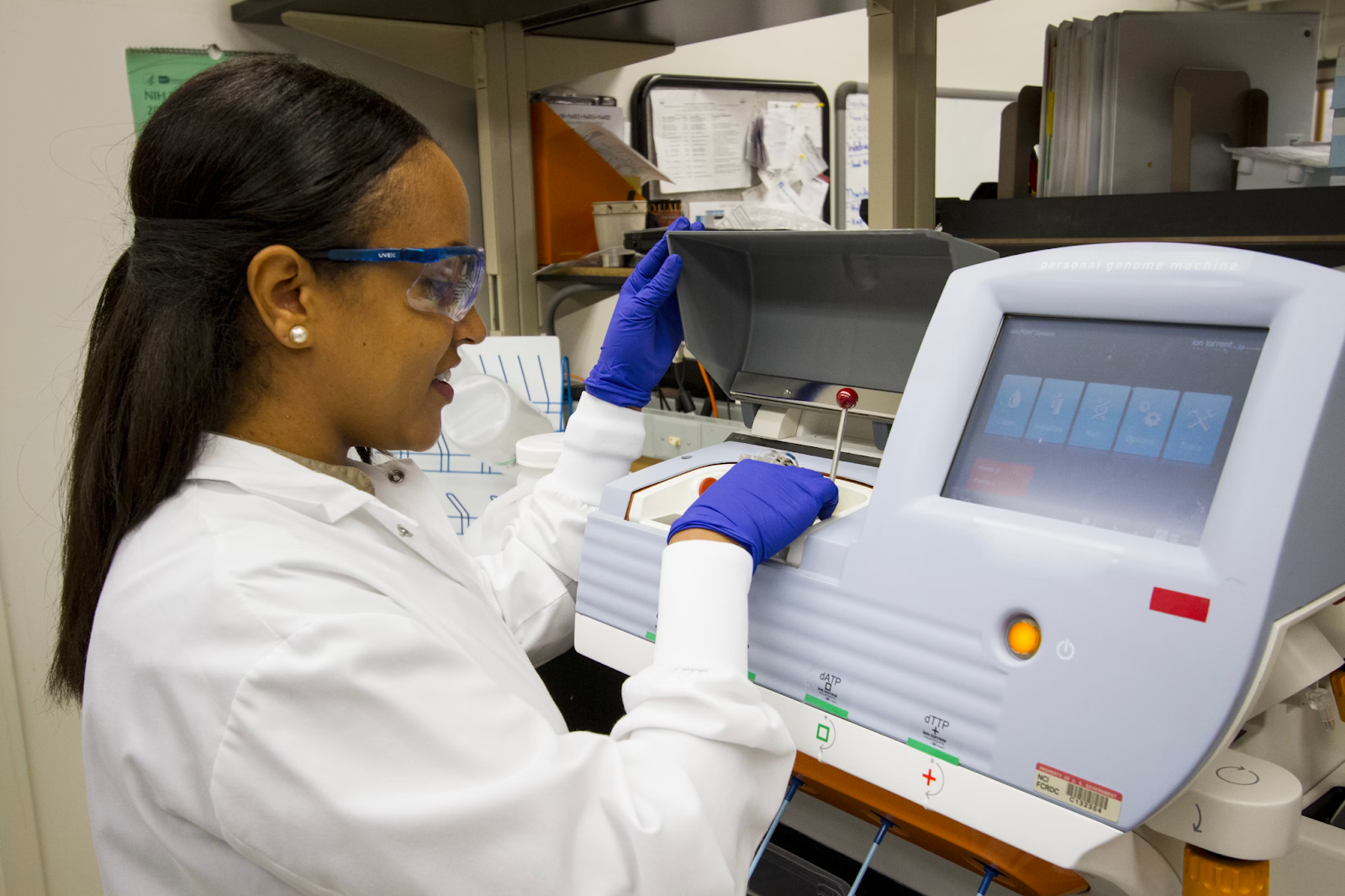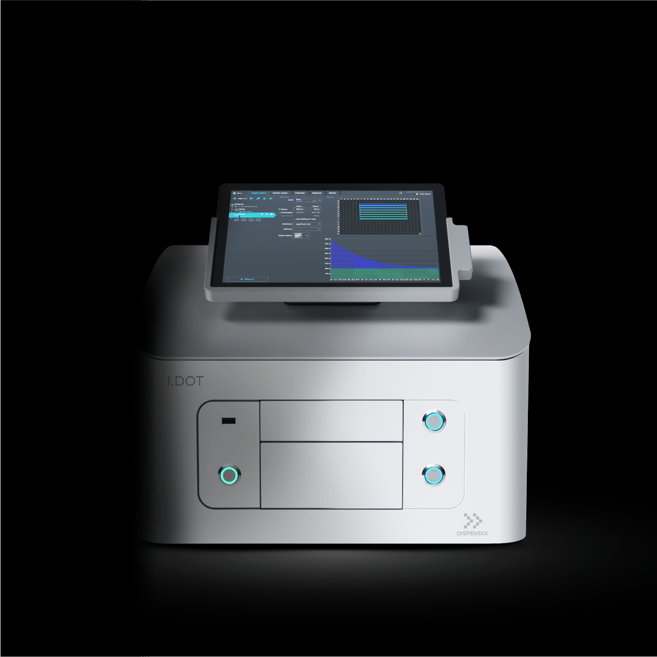Assay miniaturization involves scaling down the volume of an assay while retaining the same degree of accuracy and precision. Assay miniaturization has proven super useful for scientists and clinicians alike across the fields of drug discovery, diagnostics, personalized medicine, and ecology. Not only does it allow assays to be packaged into compact, portable formats, ideal for point-of-care and field testing, but it also offers a more efficient and cost-effective approach to laboratory testing. Here, we will delve into the how and why of assay miniaturization and highlight some strategies to overcome challenges.
How Are Miniaturized Assays Transforming Research?
First, let’s delve into the how of miniaturized assays. Assay miniaturization is revolutionizing clinical research, drug discovery, diagnostics, and personalized medicine. In drug discovery, miniature assays facilitate high-throughput screening (HTS) in reduced volumes, allowing for more extensive and efficient compound testing with the limited compound volumes sometimes available1. This includes advanced formats like organ-on-chip and lab-on-a-chip, which minimize animal testing; improving lab sustainability and enhancing cost-efficiency in the process2,3. In diagnostics, miniaturization enables compact, rapid tests crucial for early disease detection, employing microfluidics for precise, small-volume testing, beneficial in point-of-care settings. Genomic assay miniaturization, particularly in next-generation sequencing, allows cost-effective, high-quality DNA/RNA sequencing with minimal sample volumes (Fig. 1). This is especially useful when working with patient samples, which can be small in volume and difficult to re-obtain later if they run out. In personalized medicine, miniaturized assays assist in accurate diagnosis and treatment monitoring with minimal starting material from patients, which helps clinicians provide tailored treatments to those who need them.

Figure 1. Miniaturized assays can be used for high-throughput DNA sequencing for research and clinical applications. (Source)
To learn more about how and where assay miniaturization is transforming research and clinical practice, read The Mini Revolution: Miniaturized Assays Transforming Research.
What Are the Advantages of Miniaturization?
Assay miniaturization in scientific and clinical research offers multiple benefits, notably reducing sample and reagent volumes right down to nanoliter scales for faster, more efficient results. This approach enables the use of plates with more wells (up to 1536), amplifying testing scale and efficiency4. Assay miniaturization also concentrates targets and reduces diffusion distances, which in turn enhances assay sensitivity and precision5. The compactness of assays is ideal for point-of-care applications, environmental field testing, and critical care, offering rapid results where they are needed. Finally, the reduced reagent requirements and faster assay setup provide considerable savings in terms of both cost and time.
If you’re interested in delving deeper into the advantages of assay miniaturization, check out 5 Cutting-Edge Assay Miniaturization Benefits.
How Can I Effectively Scale Down Assays and Overcome Challenges?
Effective assay miniaturization involves strategic sample preparation and reaction optimization6. Key steps include using microfluidic technologies for precise sample handling, employing miniaturized extraction and purification techniques for small volumes, and concentrating samples without significant loss. Reaction miniaturization is achieved by reducing reaction volumes in smaller well plates or nanowells and using automated dispensers like the I.DOT Liquid Handler for accurate liquid handling. The I.DOT Non-Contact Dispenser comes in several formats, optimized for flexibility, accessibility, genomics, and drug discovery (Fig. 2), allowing you to choose the best fit for your application. Microfluidic devices are also crucial for controlling environmental factors in complex biological studies7.

Figure 2. The I.DOT HT Liquid Handler is optimized for drug discovery applications, offering up to 384 source wells with 80 μL capacity.
Detection method selection is integral to assay optimization, focusing on highly sensitive fluorescence, luminescence, and digital assays to improve precision and sensitivity8. Multiplexing capabilities are important for analyzing multiple analyses simultaneously, especially with limited samples9. Overcoming assay miniaturization challenges involves maintaining an optimal signal-to-noise ratio and ensuring transferability to larger-scale experiments. Rigorous validation and quality control, with new calibration protocols and controls, are essential to maintain assay reproducibility and reliability.
To learn more about techniques to effectively downscale assays and overcome the challenges associated with assay miniaturization, see Scale Down for Big Impact: Strategies and Techniques for Assay Optimization.
Conclusion
Assay miniaturization represents a significant advancement in scientific and clinical research, streamlining processes across various fields while maintaining accuracy and precision. Miniaturized assays are crucial in drug discovery, diagnostics, personalized medicine, and beyond, where they have the benefits of increased efficiency, enhanced sensitivity, and reduced costs. For scientists and clinicians, understanding and leveraging the potential of assay miniaturization represents a step toward more effective, tailored, and ethical research practices.
Discover how downsizing your assays can lead to an upsized impact. Unleash the hidden potential of your research – schedule a consultation today to explore the powerful paradox of scaling down for a big impact!
References
-
Pereira SAP, Dyson PJ, Saraiva MLMFS. Miniaturized technologies for high-throughput drug screening enzymatic assays and diagnostics – A review. TrAC Trends Anal Chem. 2020;126:115862. doi:10.1016/j.trac.2020.115862
-
Low LA, Mummery C, Berridge BR, Austin CP, Tagle DA. Organs-on-chips: into the next decade. Nat Rev Drug Discov. 2021;20(5):345-361. doi:10.1038/s41573-020-0079-3
-
Sung JH, Wang YI, Narasimhan Sriram N, et al. Recent Advances in Body-on-a-Chip Systems. Anal Chem. 2019;91(1):330-351. doi:10.1021/acs.analchem.8b05293
-
Silva TC, Eppink M, Ottens M. Automation and miniaturization: enabling tools for fast, high‐throughput process development in integrated continuous biomanufacturing. J Chem Technol Biotechnol. 2022;97(9):2365-2375. doi:10.1002/jctb.6792
-
Bosco A, Ambrosetti E, Mavri J, Capaldo P, Casalis L. Miniaturized Aptamer-Based Assays for Protein Detection. Chemosensors. 2016;4(3):18. doi:10.3390/chemosensors4030018
-
Kricka LJ, Park JY, Li SF, Fortina P. Miniaturized detection technology in molecular diagnostics. Expert Rev Mol Diagn. 2005;5(4):549-559. doi:10.1586/14737159.5.4.549
-
Ortseifen V, Viefhues M, Wobbe L, Grünberger A. Microfluidics for Biotechnology: Bridging Gaps to Foster Microfluidic Applications. Front Bioeng Biotechnol. 2020;8:589074. doi:10.3389/fbioe.2020.589074
-
Basu AS. Digital Assays Part II: Digital Protein and Cell Assays. SLAS Technol. 2017;22(4):387-405. doi:10.1177/2472630317705681
9. Ahmad R, Ahsan H. Emerging technology of multiplexing in clinical diagnostics. Int J Health Sci. 2022;16(2):1-2.